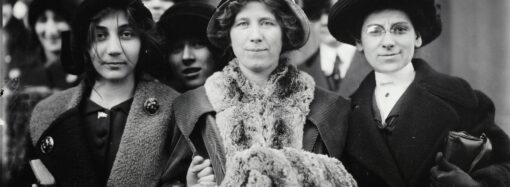It’s easy to look at contemporary events and feel anxious about the future of America. There have been riots, arson, and looting in the wake of George Floyd’s death at the hands of Minneapolis police officers. In some instances, over-aggressive cops shot peaceful demonstrators and journalists with rubber bullets and pepper spray. Several politicians are now considering using the military to enforce law and order.
These are scary times. But though it may feel like the nation is falling apart, the events of this year are hardly unprecedented. In fact, America faced similar civil unrest a century ago. The circumstances of that unrest were of course very different, but the results were eerily similar.
During the First World War and its aftermath, America was an extremely volatile place. Racial tensions, already tense before the conflict, were exacerbated by the war.
Military production ramped up significantly because of the war, creating new opportunities for black Southerners to find jobs at Northern factories. But racist white laborers resented the added competition and attempted to violently push out black families. In July 1917, a white mob ran through the streets of East St. Louis, attacking blacks and setting fire to their homes. Perhaps as many as 250 blacks were killed and 6,000 were rendered homeless. Little was done by authorities to quell white supremacist violence.
The devastating riot elicited major backlash from the black community around the country. The NAACP organized a massive protest march in New York City. Known as the “Silent Parade,” the march was among the first large-scale civil rights protests in America. Newspaper accounts from the time described the march as “one of the most quiet and orderly demonstrations ever witnessed on Fifth Avenue.” No violent confrontations between the marchers and the police were reported.
The Silent Parade went smoothly and peacefully, but unfortunately it was an outlier. Stoked by war fever, civil rights went out the window almost as soon as war was declared. Civil unrest and government repression quickly became normalized almost everywhere.
In May 1917, the Selective Service Act forced millions of young men to register for military service. Those who failed to register were subject to imprisonment.
To ensure draft compliance, the federal government initiated so-called “slacker raids.” In the fall of 1917, a combination of federal agents, local police, and vigilante recruits rampaged through New York City and northern New Jersey and rounded up more than 50,000 draft-age men at gunpoint. Though most of the detainees were eventually set free, at no point were they granted anything resembling due process.
The vigilante thugs who helped the authorities were part of a group called the American Protective League (APL). An unofficial arm of the Justice Department, the APL was essentially a terrorist organization far worse than Antifa. Its mission was to spy on and harass American citizens engaged in “unpatriotic” activities. They routinely conducted raids without obtaining warrants and reported on their neighbors with all the energy of the Nazi Gestapo. As historian G. J. Meyer writes, the APL was “the most intrusive and far-reaching…threat to free speech and the right of assembly in the history of the United States.”
Whereas some politicians in 2020 may excuse rioting and looting (while others advocate for shooting the looters), 100 years ago mob violence was openly and regularly encouraged. Speaking about dissenters, then-Attorney General Thomas Gregory said, “May God have mercy on them, for they need expect none from an outraged people and an avenging Government.”
Similarly, former president Teddy Roosevelt publicly called for a sitting senator to be hung. The senator’s crime? Criticizing the war.
Government repression of freedom of speech continued even after the conclusion of the war. While we watch in horror as police in 2020 push journalists around and threaten to arrest them, in 1919 the federal government actively censored publications it didn’t like, particularly black publications. One month, the Justice Department invoked its powers under the Espionage Act to halt the distribution of W. E. B. Dubois’ magazine The Crisis.
In the South, there were intense calls to ban The Chicago Defender, a newspaper which reported on lynchings and exposed the cruelty of Jim Crow society. After a mob gathered in a Texas town and prepared to burn down the house of a Defender reporter, local police ordered that all undistributed copies of the paper be destroyed.
None of these historical reflections are meant to belittle the inequities confronted by Americans in 2020; neither are they meant to downplay the significance of contemporary efforts to reform the criminal justice system.
But reflecting on the past should be able to offer us some perspective. No matter how chaotic our country may appear to be at the moment, we ought to remember that things were often far worse for our ancestors. Keeping our history in mind may help relax our anxiety about the future of America, while allowing us to confront our problems with a sober and morally resolute attitude.
—
[Image Credit: Flickr-Lorie Shaull, CC BY-SA 2.0]
Image Credit: [Image Credit: Flickr-Lorie Shaull, CC BY-SA 2.0]
















Leave a Comment
Your email address will not be published. Required fields are marked with *